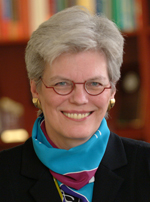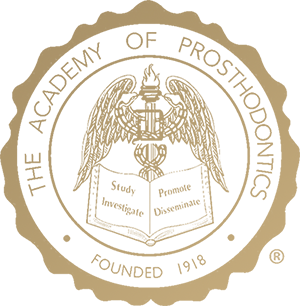Dr. Dianne Rekow
September 6, 1944 - August 11, 2022

Elizabeth “Dianne” Rekow (1944-2022) was lost to us following a brief encounter with COVID-19. Dianne was a futurist, with boundless energy to ask questions and to pursue exciting and novel scientific paths. Her career started at the University of Minnesota and went on to include tenures at the University of Maryland, University of Medicine and Dentistry of New Jersey, and New York University, an ultimately becoming Dean of King’s College of Dentistry in London (2012-2016) before retirement. Along this path, she was a constant figure at American Association for Dental Research (AADR, now AADOCR, American Association for Dental, Oral, and Craniofacial Research) and the International Association for Dental Research (IADR). She served as 35th AADR President in 2006-07 and 88th IADR President in 2011-12.
Dianne migrated into dentistry on a bet. Her early career was as an engineer (BSME, MSME) with her earliest scientific work in Minneapolis for Medtronics. Fascinated by potential biomedical applications to CAD/CAM, she flirted with ideas to adapt the technology for dentistry. She was discouraged at every turn by dentists around her. They were challenging her credibility, so she went to dentalschool. Armed with a new degree from the University of Minnesota and forward-thinking ideas, she began early planning for bold efforts to machine the first dental crown. Realizing she needed more math and some relevant computing skills, she set off to earn a PhD to support those goals. She would often chuckle and smile in response to endless affronts by others that her ideas were too far-fetched for dentistry. Every doubter created a new challenge for her. During this same period, she also earned an MS and certificate in orthodontics. Suddenly, she was credentialed with a BSME, MSME, MBA, DDS, MS, Certificate in Orthodontics, and PhD. Now people were not only watching her, but also listening to her.
In 1986, Dianne worked on a milling project. She milled a full gold crown with a primitive version of her original CAM software as a proof of concept. This was 1200 miles away, using a painfully slow version of an early internet. The picture then was printed on a graphics plotter, taking almost 3 hours to complete. The situation was pushing the boundaries of available technology. This preceded evolution of routine computer graphics support and regular color printers. As Dianne would say years later in an interview by Inside Dentistry [1], “One of our major limitations was the computational power in the late 1970s and early 1980s, which prevented us from realizing a fully automated system.” This came up many times during her career.
Three years later (1989), Dianne participated in the first international CAD/CAM conference sponsored by the Academy of Dental Materials and held at the American Dental Association auditorium in Chicago [2]. All early dental CAD/CAM inventors attended. There were comparisons of challenges. Several inventors reveled in stories of b-spline computing to program smoothly milled surfaces. There were endless ideas of better ways to digitize teeth intraorally to create targets for milled topologies. For CAD/CAM, there are really five different levels of challenge – (1) computerized surface digitization (intraoral scanning), (2) computer assisted design (of what to create), (3) computer assisted milling (or machining), (4) computer aided finishing (of surfaces), and (5) computer aided esthetics (or color matching of the restoration) [3]. Most equipment during the last 35 years has focused on (a) intraoral scanning and (b) computer design with milling. Dentistry evolved more than two dozen systems with tremendous improvement in resolution for image capture, automated design, and millable materials. While Dianne’s early equipment never became commercially available, it clearly paved the way for other systems that followed. The earliest CAD systems employed “subtractive” approaches (i.e., cutting or milling an object from a block of material). Newer approaches today include additive technologies, in which material is deposited by 3D printing on the way to making a final object.
It is helpful to envision Diane’s career in three major phases. The first involved CAD/CAM and all the related digital dentistry technologies. The second focused on the science of dental ceramics and fracture mechanics. The third stage embraced dental administration where she focused the same energy on new ideas, stimulating innovative advanced research efforts, and working for the professional and scientific advancement of women.
Throughout her career, Dianne succeeded as a leader and as a woman in a dental world dominated by conservative men's views. She was heralded as the voice always asking, "How can we do it?" She would pose the question with a glint in her eye and a smile on her face, because she was already imagining the path to success.
For the next 30 years, she became a leading voice for the future of dentistry. She was later adopted by Henry Schein brought her on board as an advisor for her forward-thinking views and the Santa Fe Group did likewise recognizing the novel questions she posed about the future. If she had been a Disney character, she most certainly have been given the title of “imagineer.” All the students, graduate students, or mentored faculty around her, cheered her visions and charged ahead. She was a natural mentor and spiritual force.
Dianne also had a driving interest in the ideas of others. She was a conference-hound, attending as many and varied meetings as possible. She would sit quietly absorbing new information, while she simultaneously knitted through presentations and mentally forged new ideas. One of the greatest gains in research occurs when one crosses over into new scientific areas or studies the science of others outside of your immediate field. You develop new points of view and potential collaborations. Problem solving happens quickly. So many scientists remain trapped within their own small circle of interest where colleagues are all tuned to the same frequency and rarely do creative problem solving. Dianne had a huge circle of contacts and boundless friends from embracing a wide range of disciplines and their ideas.
Her path through dentistry and dental science was significantly enabled by her partner, Dr. Van Thompson. Van was equally successful in his own right, but also an eager collaborator and voice of constant support. What a great strength to have a partner on whom you could bounce endless ideas and get positive feedback. What a great life to have such a partner 24/7 in support of your creative thinking.
Dianne’s second major career stage included associations with an incredible team; ceramic engineers from the University of Maryland, the fracture and fatigue group at NIST led by Brian Lawn, and key clinical colleagues such as Ken Malament. So many of her publications and student research ideas grew from this time of collaboration. Her work focused on fracture mechanics of brittle materials and layered materials, with the goal that these could become the materials for fabrication via a range of dental routes, but particularly for CAD/CAM.
The third stage of her career was one dominated by administrative growth and leadership. At New York University (NYU), her spirited questions about new views were fully supported by the top administrative leaders. She served as the Chair of Basic Science and Craniofacial Biology, Director of Translational Research in the College of Dentistry, Special Advisor to the Provost and President of Engineering at NYU, and Senior Vice President for Engineering and Technology, including Provost of the Polytechnic Institute for NYU. She was a key collaborator at a time of major change for NYU. All of this vaulted her toward her appointment as Dean of the College of Dentistry in 2012 at King’s College London (KCL). KCL embraced her ideas and the School moved quickly forward on many fronts. She was a cheerleader for everyone in the School who wanted to pursue research in some way, while at the same time supporting the work of the clinical scientists. Beyond Dianne’s unifying success was her continual mentorship of those around her. As described by Dr. Lyndon Cooper (VCU Dean of Dentistry):
A core part of that mentorship was teaching people how to lead. Her leadership of our profession shines brightly. Whether serving a role as an investigator, a department head, a dean, organization president, or board member, Dr. Rekow was always leading. She had an important impact in my career. I was fortunate to be introduced to Diane early on his academic path. Even though, we did not share university appointments, she was enlightening and supporting of all young clinicians, scientists, and academicians serving in dentistry. Among her abilities as a leader, she was able to convey a special mixture of empathy, concern and enthusiasm while pointing dentistry down new important and challenging avenues.
While Dr. Rekow was serving as Kings College London Dean of Dentistry, she still had the energy and desire to bring an important textbook to life. Diane called me one afternoon to ask if I, together with Dr. Steven Campbell, would contribute a chapter to her new textbook. Her call was quintessential Dianne. She first wanted to know what I was doing, how I was doing, and if I was enjoying what I was doing. She wanted a chapter regarding digital technology, complete dentures, and education. In typical Dianne fashion, our contributions were expertly guided as she edited her textbook, “Digital Dentistry. A Comprehensive Reference and Preview of the Future” [4]. This achievement was another exclamation point in a biography of innovation, forward thinking research, and compassionate education that is rarely matched in dentistry. I was blessed with the opportunity to share those moments with Dianne just days before her passing.”
Another facet of the Rekow mystique was her behind-the-scenes effort to build paths, support careers, and mentor women in science. She was a strong role model. She had benefited from early STEM efforts to advance her own career. She wanted to make sure that women became a major part of future science. She quietly supported this goal throughout her own career. Asked once what she thought might have been her greatest impact in science, she said, “moving the careers of other women forward.”
Dianne supported special Artificial Intelligence presentations The world had begun to explode with AI as part of the new science. Dianne was quick to recognize that AI, whether at the level of advanced programming or new algorithms, was touching every aspect of society in business, finance, education, security systems, communications, space travel, military operations, engineering, medicine, and health care. However, most importantly, the combination of AI tools, quantum computing, and 5G communication would now make possible an incredibly rich opportunity to transform health care as we know it. Rather than the historical barrier of having to wait for new digital tools to be designed, those resources were now in place and ready to go. She dreamed about what it would be like to start a career today with so many powerful tools in the toolbox.
Her professional contributions involved 7 patents, 92 peer-review publications, 10 book contributions, 31 proceeding contributions, and well over 100 national and international presentations. However, her greatest contribution was her expansive imagination.
Dianne’s great gift to us was cut short. Her brain had constantly re-designed dental directions. Her energy was still boundless. In retirement, time was now available for her to celebrate her grandkids and continue to quietly knit up a storm. Yet, she was never without projects. She was elected to the local school board and tutored advanced students in math. Believe it or not, Dianne and Van also were learning metalworking skills to build their own airplane at their retirement home in Maine at the time that her life was cut short.
Thank you Dianne, dear friend
Prepared by AP Associate Fellow
Dr. George Tysowsky
